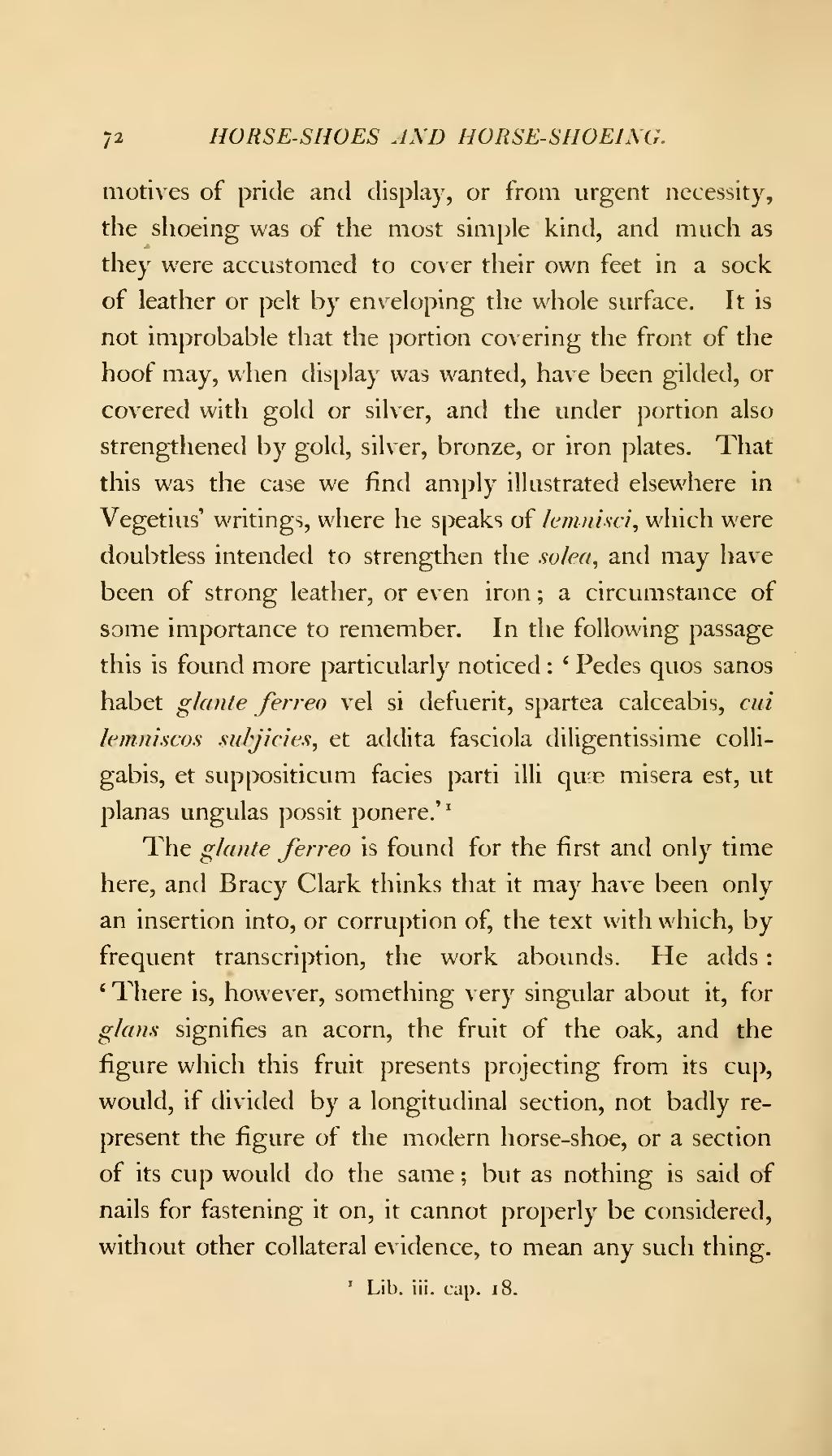motives of pride and display, or from urgent necessity, the shoeing was of the most simple kind, and much as they were accustomed to cover their own feet in a sock of leather or pelt by enveloping the whole surface. It is not improbable that the portion covering the front of the hoof may, when display was wanted, have been gilded, or covered with gold or silver, and the under portion also strengthened by gold, silver, bronze, or iron plates. That this was the case we find amply illustrated elsewhere in Vegetius writings, where he speaks of lemnisci, which were doubtless intended to strengthen the solea, and may have been of strong leather, or even iron; a circumstance of some importance to remember. In the following passage this is found more particularly noticed: ‘Pedes quos sanos habet glante ferreo vel si defuerit, spartea calceabis, cui lemniscos subjicies, et addita fasciola diligentissime colligabis, et suppositicum facies parti illi quæ misera est, ut planas ungulas possit ponere.’[1]
The glante ferreo is found for the first and only time here, and Bracy Clark thinks that it may have been only an insertion into, or corruption of, the text with which, by frequent transcription, the work abounds. He adds: ‘There is, however, something very singular about it, for glans signifies an acorn, the fruit of the oak, and the figure which this fruit presents projecting from its cup, would, if divided by a longitudinal section, not badly represent the figure of the modern horse-shoe, or a section of its cup would do the same; but as nothing is said of nails for fastening it on, it cannot properly be considered, without other collateral evidence, to mean any such thing.
- ↑ Lib. iii. cap. 18.

